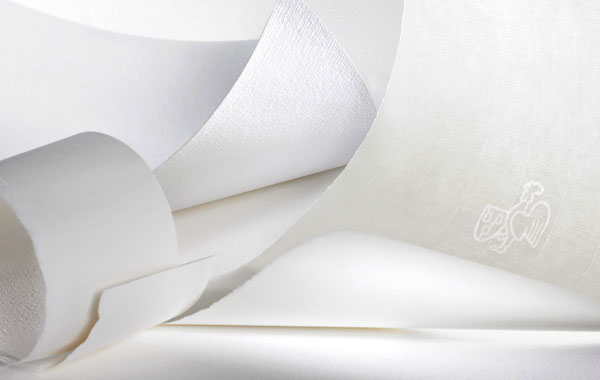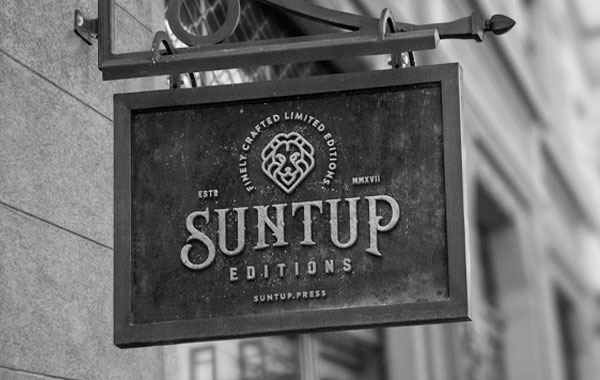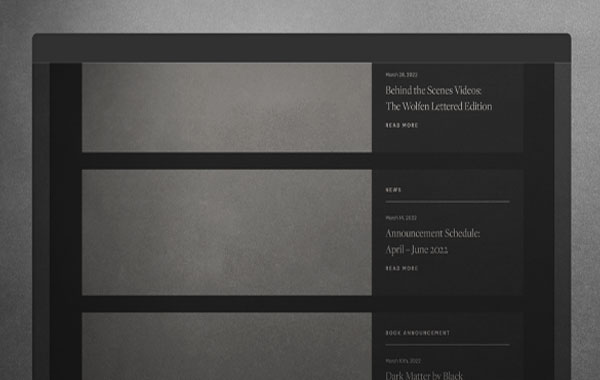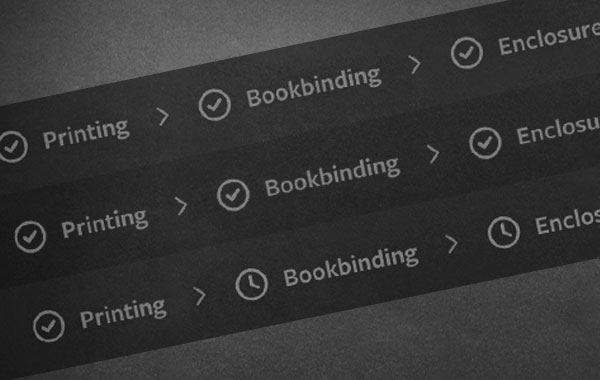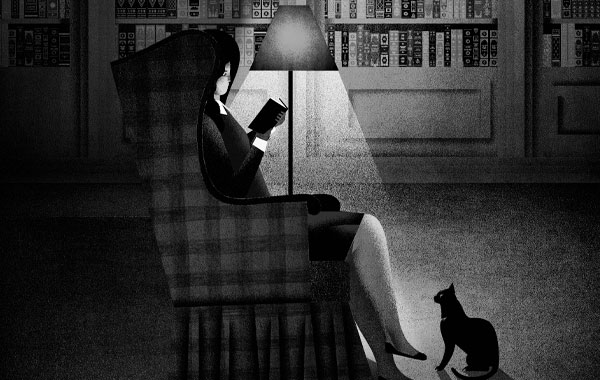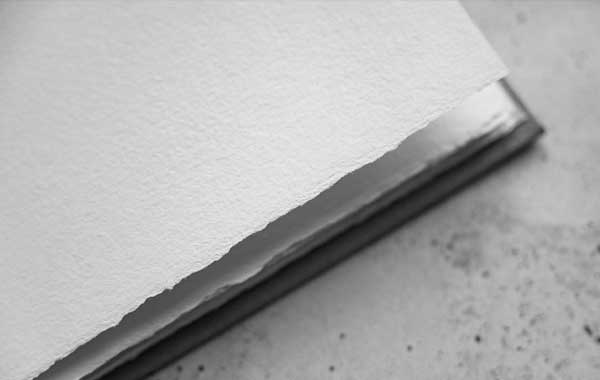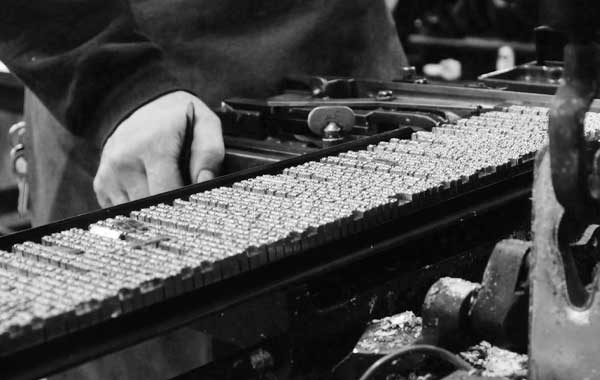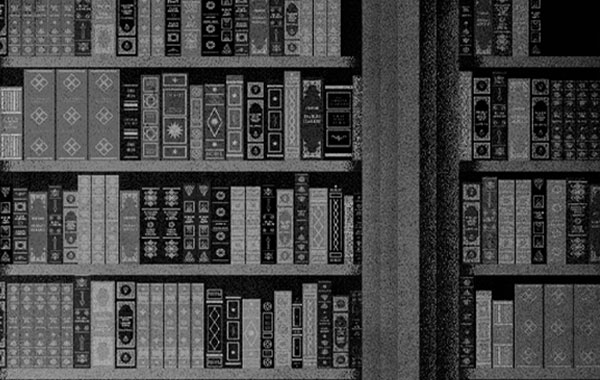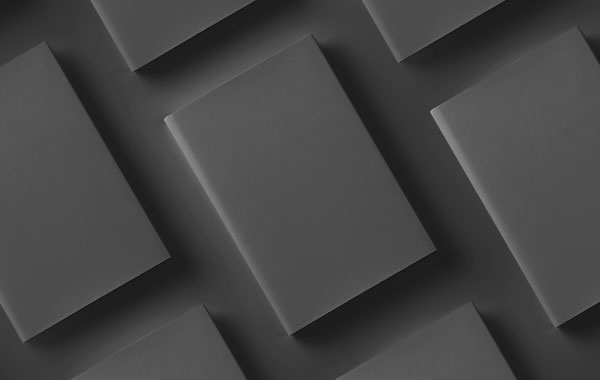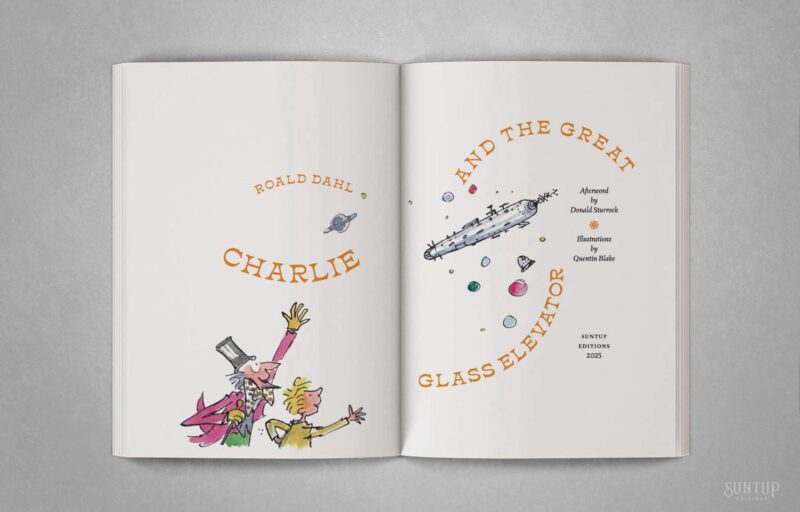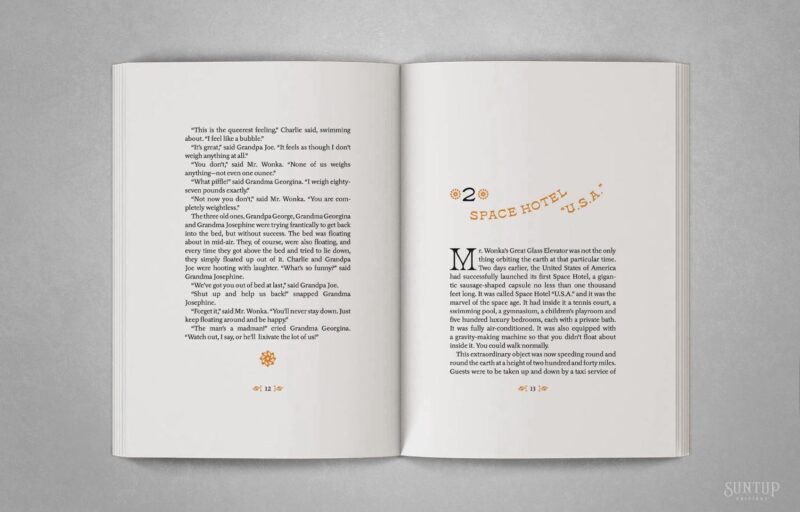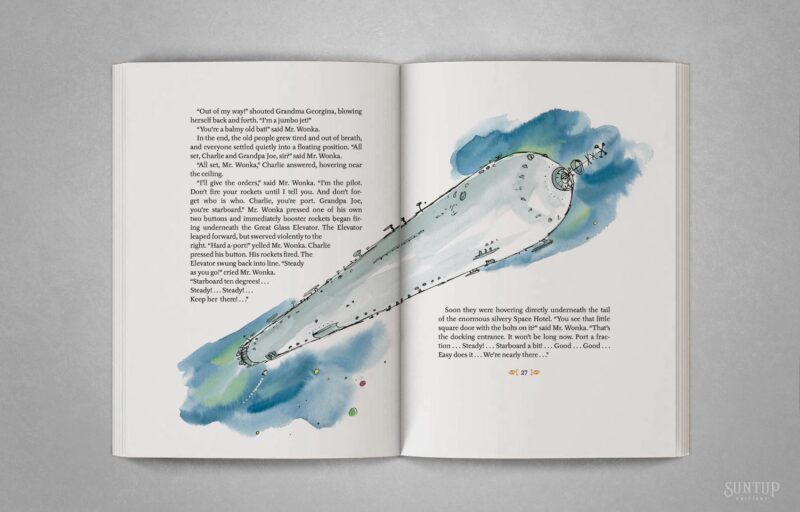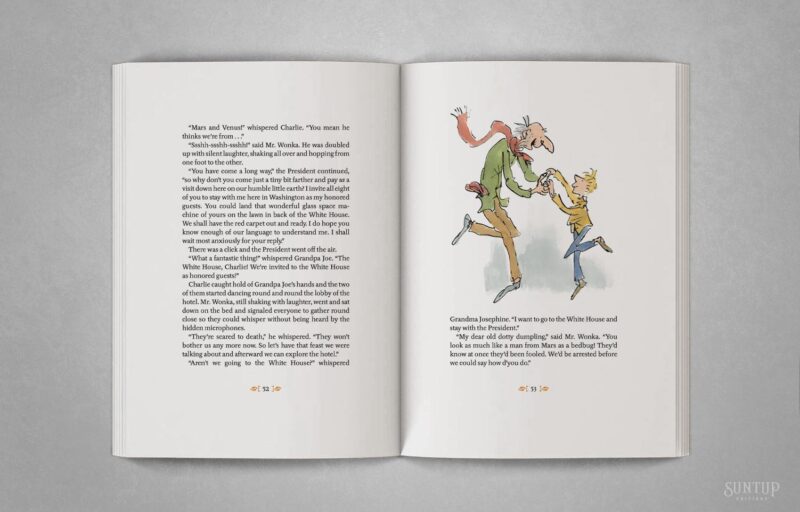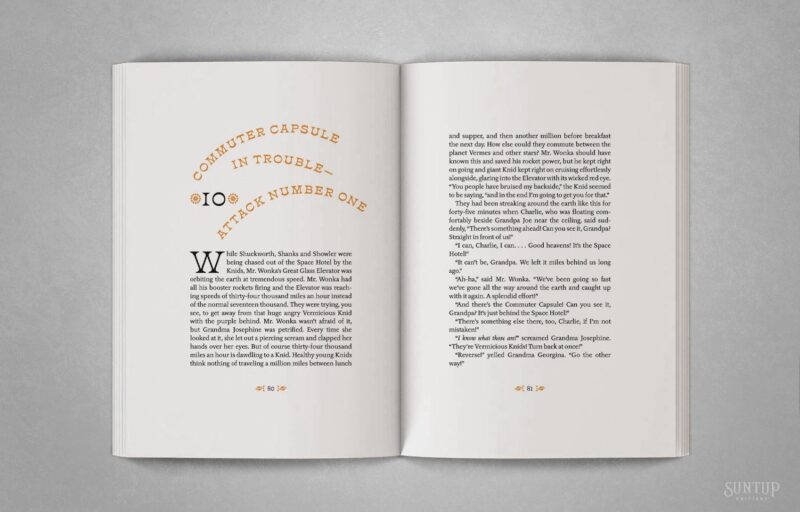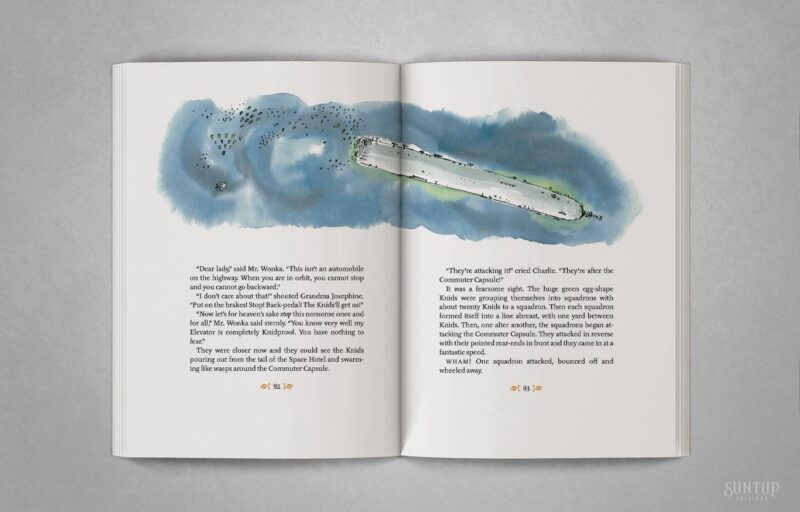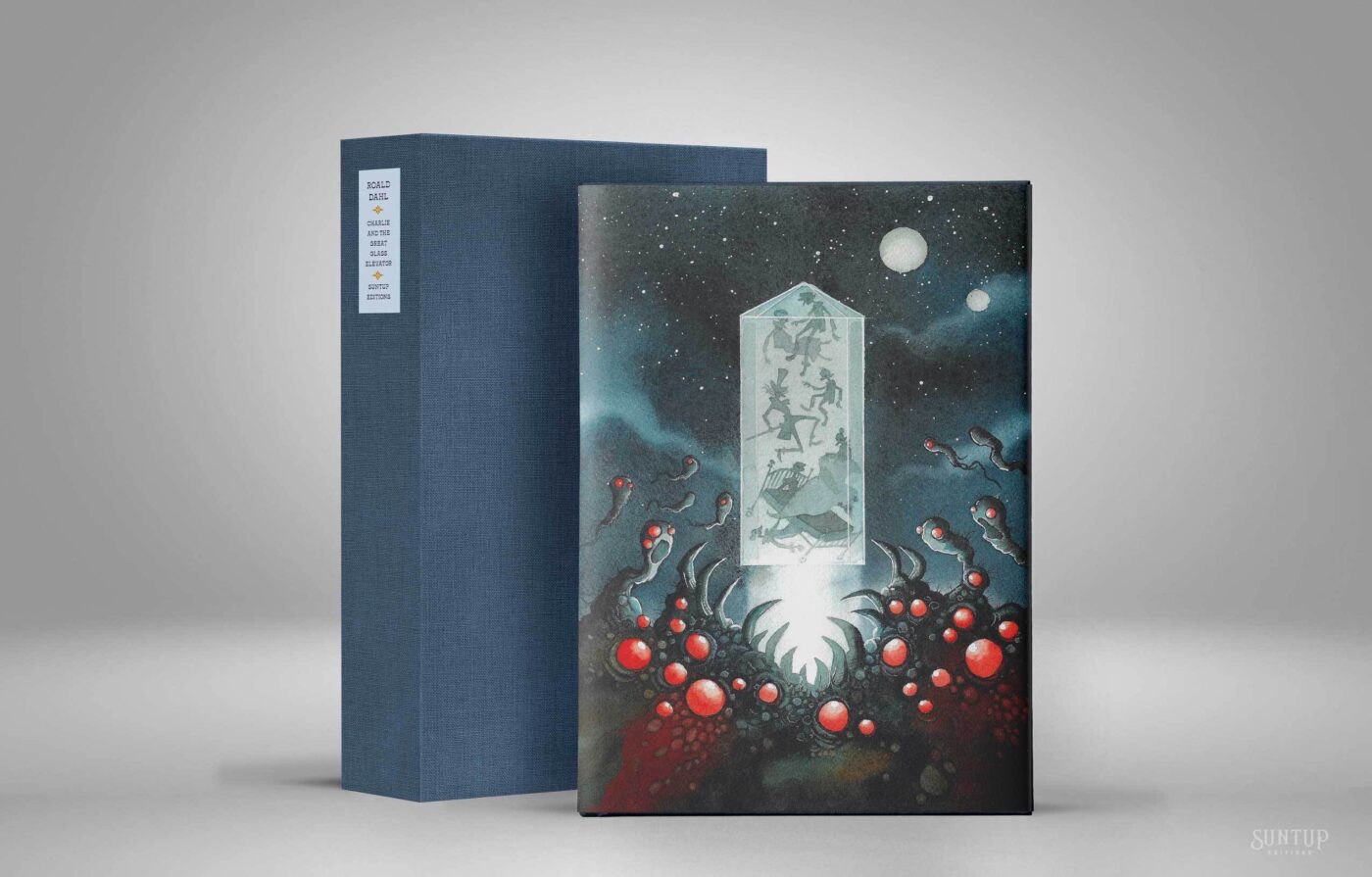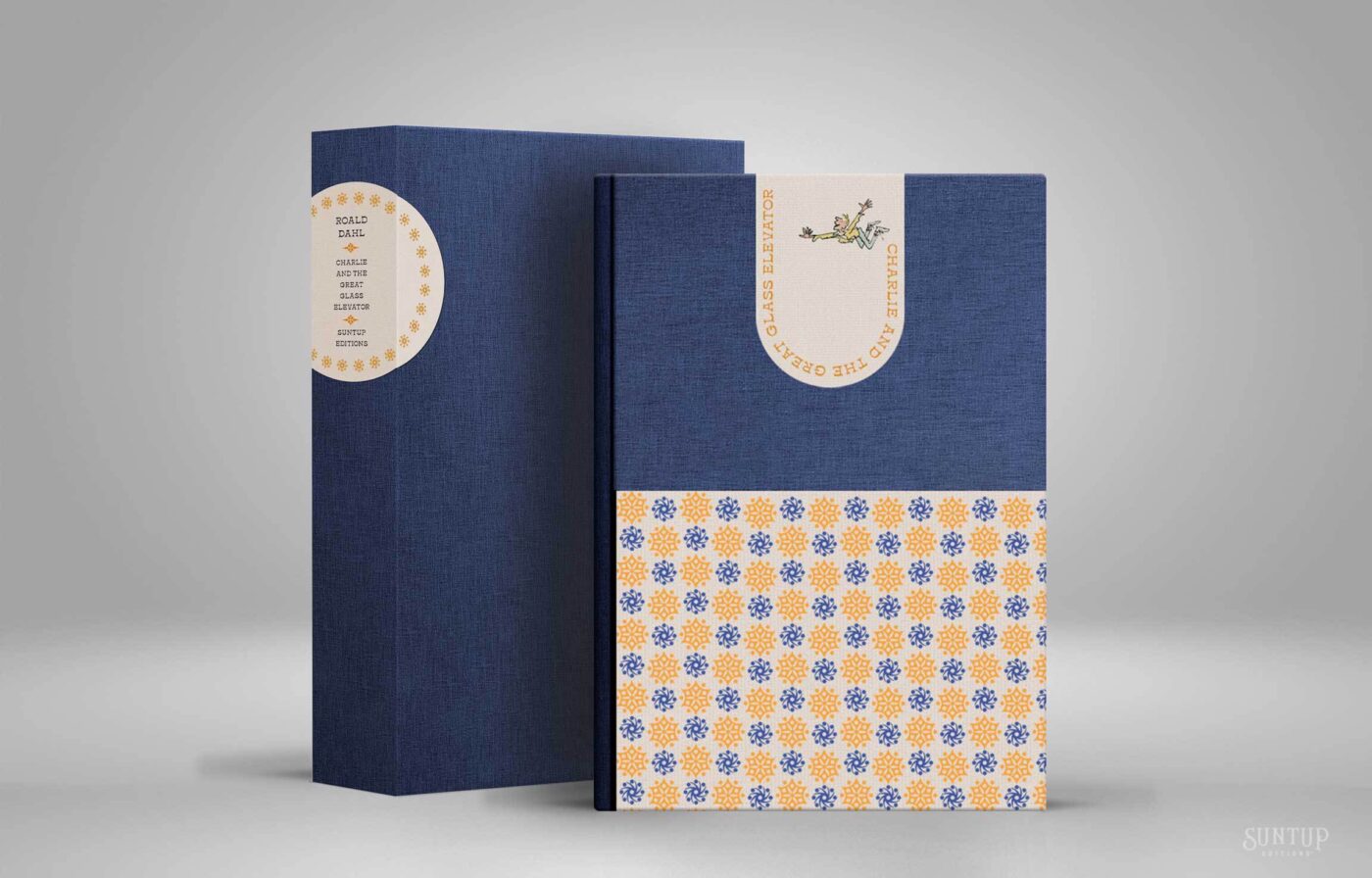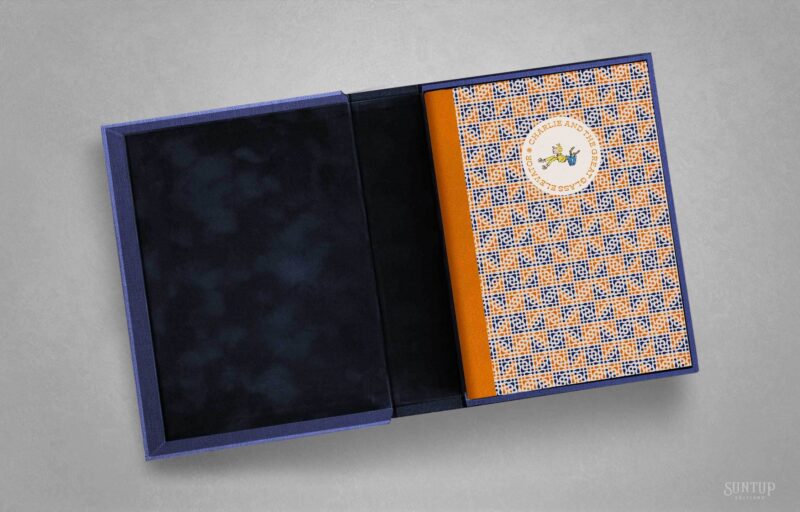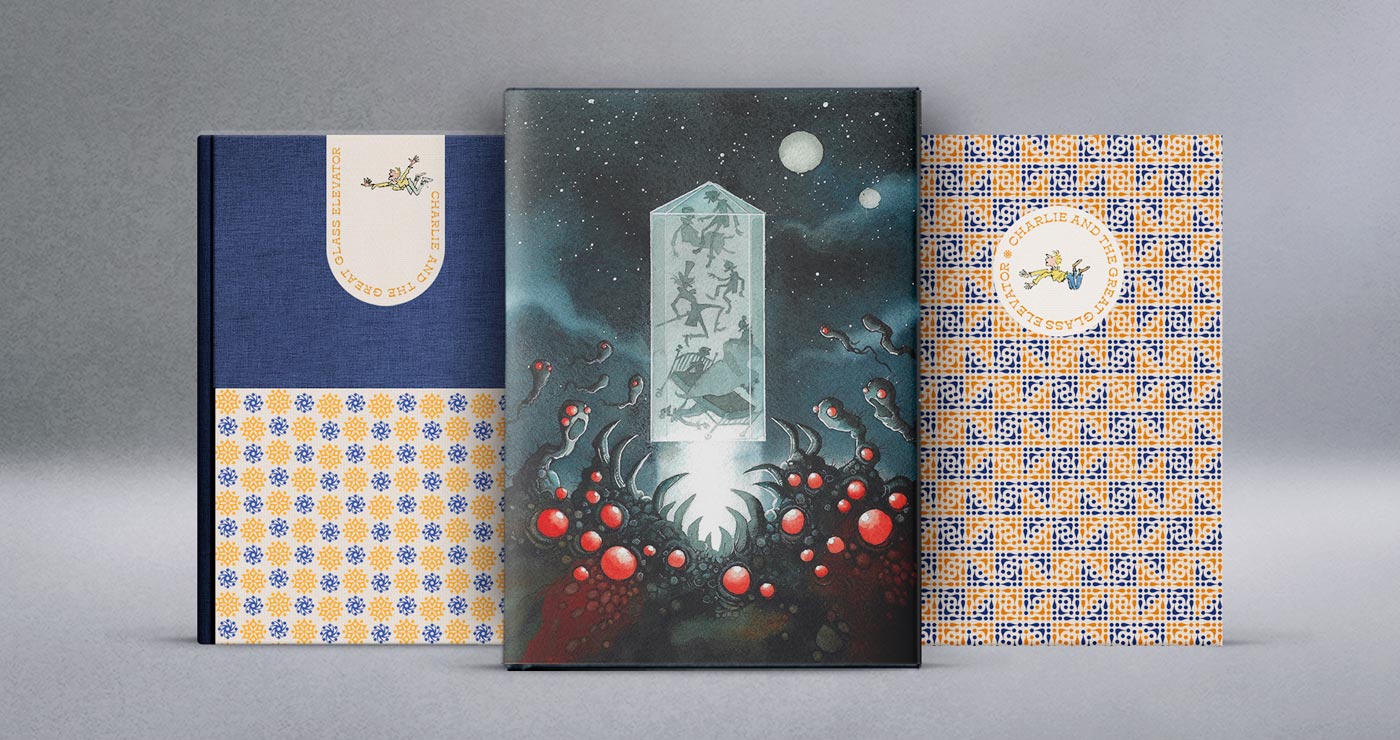
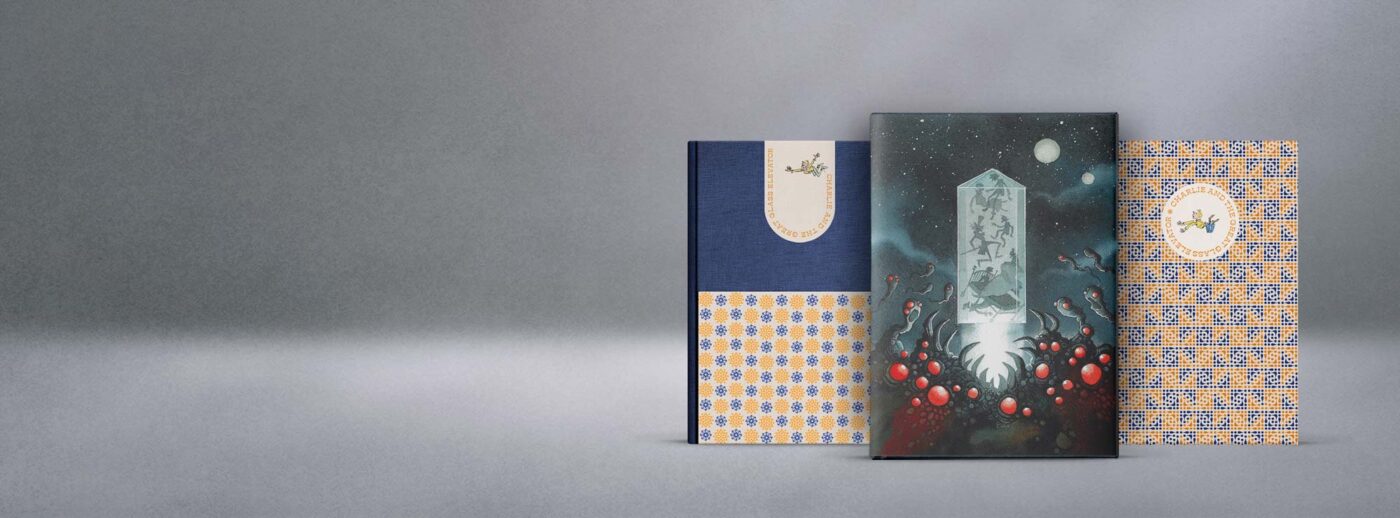
Charlie and the Great Glass Elevator Roald Dahl
Illustrations by Quentin Blake
Afterword by Donald Sturrock
Dust jacket illustration by Gris Grimly
From the heart of the chocolate factory to the edges of space, Charlie and the Great Glass Elevator is the extraordinary sequel to Roald Dahl’s most beloved novel, Charlie and the Chocolate Factory.
Last seen flying through the sky in a giant elevator in Charlie and the Chocolate Factory, Charlie Bucket is back for another adventure. When the giant elevator picks up speed, Charlie, Willy Wonka and the gang are sent hurtling through space and time. Visiting the world’s first space hotel, battling the dreaded Vermicious Knids, and saving the world are only a few stops along this remarkable, intergalactic joyride.
First published in 1972, Charlie and the Great Glass Elevator continues the whimsical journey of Charlie Bucket and his eccentric mentor Willy Wonka, propelling readers into a cosmic escapade that blends satire, science fiction and Dahl’s signature wit. This edition features the iconic illustrations by Quentin Blake, whose unforgettable work has become inseparable from the world of Dahl, bringing even the most wildly imaginative scenes to vibrant life.
Charlie and the Great Glass Elevator continues the enduring legacy of Roald Dahl’s inventive storytelling, offering readers both young and old a chance to relive the magic of Charlie’s further adventures.
About The Edition
Our edition of Charlie and the Great Glass Elevator by Roald Dahl is presented in three states. The edition measures 6” x 9” and features over forty-eight color illustrations by Quentin Blake, as well as a new afterword by Donald Sturrock. The editions are printed by offset lithography on Cougar Vellum, Mohawk Via and Neenah Cotton papers. Designed by award-winning designer Misha Beletsky, this edition showcases his inventive typographic style, infusing the work with charm, sophistication, and unexpected visual delight.
A Note on the Typography
Set in ITC Tyfa, Charlie and the Great Glass Elevator takes on a distinctly imaginative yet grounded tone. Designed by Czech typographer Josef Týfa in the 1960s and later adapted for ITC, Tyfa blends classical proportions with a modernist flair—its high contrast, flared serifs, and subtly calligraphic stroke endings give the typeface an elegant eccentricity. This makes it a fitting choice for Roald Dahl’s sequel, where whimsy ascends—literally—into the cosmos, yet remains tethered to human quirks and earthly satire.
The display type is Tuppence which brings a charmingly retro personality to the story with its playful curves and vintage style. Inspired by mid-century British signage and children’s book lettering, Tuppence’s rounded terminals, quirky proportions, and friendly rhythm echo the story’s topsy-turvy journey through space and absurdity. Its display qualities—bold yet approachable—capture the spirit of Roald Dahl’s world: delightfully odd, slightly mischievous, and brimming with wonder.
The ornamental features of Tuppence add an extra layer of whimsy and storytelling charm. These flourishes—stars, swirls, and decorative glyphs—evoke the fantastical elements of space travel and Wonka’s ever-surprising inventions.
Interior Design
A glimpse into the interior design of Charlie and the Great Glass Elevator, where typography and illustration work hand in hand to bring Dahl’s world to life. Quentin Blake’s unmistakable drawings appear throughout the text, and alongside them, the pairing of Tuppence and ITC Tyfa helps shape a visual tone that echoes the story’s imagination, humor, and rhythm.
Artist Edition
Order NowThe Artist edition is limited to 500 copies with a dust jacket illustrated by Gris Grimly. It is a full cloth binding with a foil blocked front cover. Endsheets are Takeo Tant Select, a unique double-sided embossed paper, and the edition is housed in a cloth covered slipcase. It is printed by offset lithography on Cougar Vellum paper, and is signed by Gris Grimly.
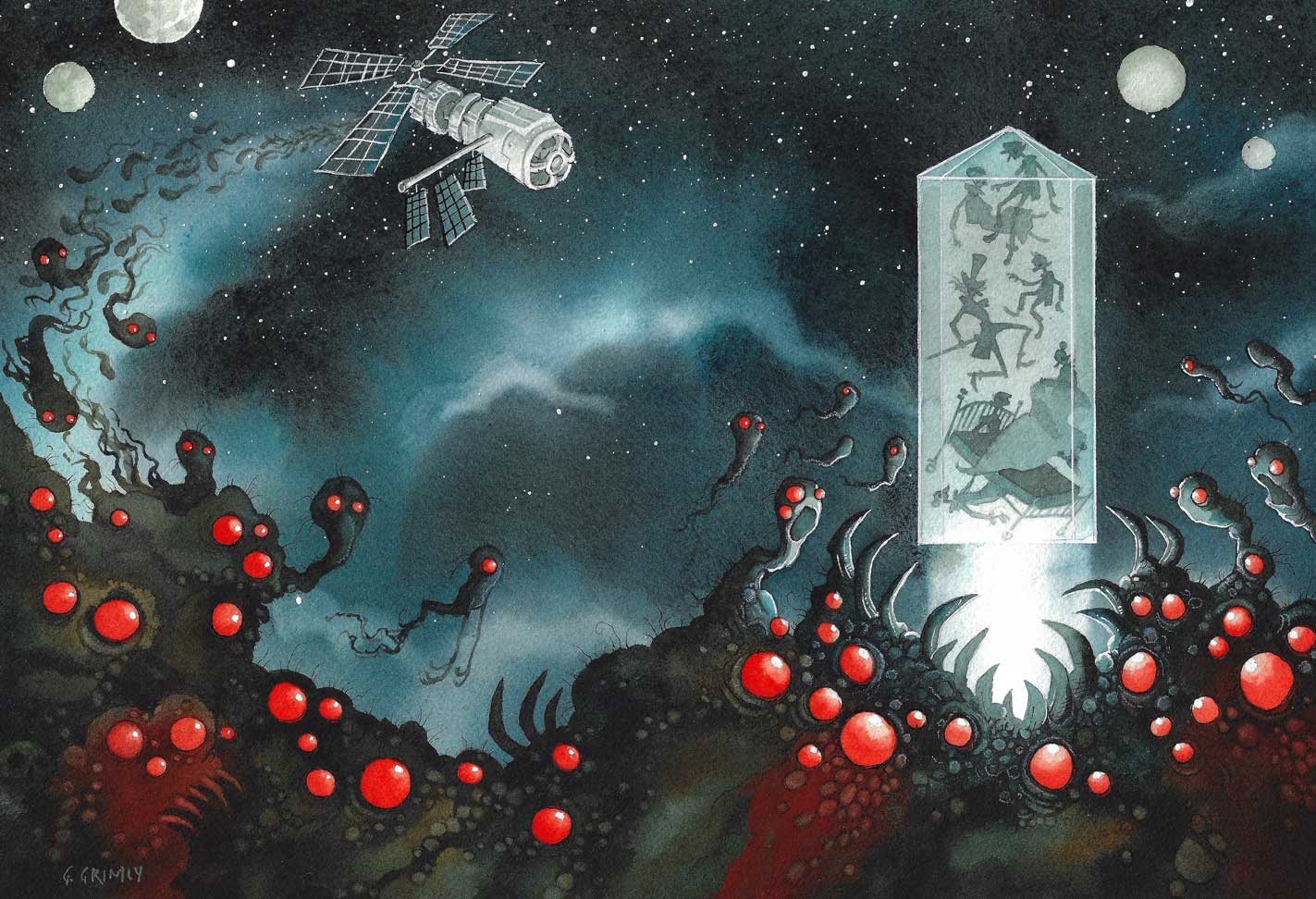
Numbered Edition
Pre-orderThe Numbered edition of 250 copies is a handbound Bradel binding with a goatskin spine and cloth & paper covering the boards. The paper is printed from a custom ornamental design for this edition and the front cover features a paper label turned over the top-edge. Endsheets are Canson Mi-Teintes and the edition is housed in a cloth covered slipcase featuring a distinctive circular spine label with its edges wrapping seamlessly onto the adjoining sides of the slipcase. A fold-out of the Artist edition dust jacket illustration by Gris Grimly is included in this state. It is printed by offset lithography on Mohawk Via paper, and is signed by Donald Sturrock and Gris Grimly.
Lettered Edition
Pre-orderThe Lettered edition is limited to 26 copies and is a handbound quarter goatskin binding with clear UV filtering acrylic boards. The covers open onto a page printed letterpress in two colors on cotton paper featuring a unique ornamental design.
The clear acrylic was selected as a deliberate homage to the story’s most iconic invention—the transparent, gravity-defying glass elevator. The use of acrylic evokes the sleek, crystalline structure of the elevator, offering readers a tactile and visual connection to the fantastical vessel that carries Charlie and Willy Wonka beyond the factory and into orbit.
The book is housed in a clamshell enclosure covered in cloth with velour lines trays. A fold-out of the Artist edition dust jacket illustration by Gris Grimly is included in this state. It is printed by offset lithography on Neenah cotton paper, and is signed by Donald Sturrock and Gris Grimly.
About the Collaborators

Donald Sturrock
Donald Sturrock studied Modern History at Oxford University, after which he joined BBC Television’s Music and Arts Department where he worked as writer and director, making over thirty documentaries, including an acclaimed profile of Roald Dahl. Since leaving the BBC, he has written for television and live theater, including five opera librettos, one of which is based on Charlie and the Chocolate Factory. His critically acclaimed biography, Storyteller: The Life of Roald Dahl, was published in 2010. Love from Boy, a collection of Dahl’s letters to his mother, was published in 2016.

Sir Quentin Blake
Sir Quentin Blake was born in the suburbs of London in 1932 and has drawn ever since he can remember. At 16, his first drawings were published in Punch, and he has made his living as an illustrator ever since. He is known for his collaboration with writers such as Russell Hoban, Joan Aiken, Michael Rosen, John Yeoman and, most famously, Roald Dahl. His books have won numerous prizes and awards, including the Whitbread Award, the Kate Greenaway Medal, the Emil/Kurt Maschler Award and the international Bologna Ragazzi Prize. He won the 2002 Hans Christian Andersen Award for Illustration, the highest international recognition given to creators of children’s books. In 2004 Quentin Blake was awarded the ‘Chevalier des Arts et des Lettres’ by the French Government for services to literature and in 2007 he was made Officier in the same order. He received a knighthood for ‘services to illustration’ in the New Year’s Honours for 2013, and became an Honorary Freeman of the City of London in 2015.

Gris Grimly
Gris Grimly is an award-winning illustrator best known for his “macabre” yet humorous books for children and young adults. For over twenty years, his distinctive style and wide selection of mediums from film and animation to literature and consumer products have captivated a variety of loyal fans worldwide. With almost thirty books published, he continues to fascinate the next generation. He was a producer, conceptual designer, and source of inspiration for the Academy Award winning film, Guillermo Del Toro’s Pinocchio.
Matching Numbers & Letters
A Matching Pre-Order email is sent to owners of our previous publication, “The Black Phone” at 9:00 A.M. PT on the day of announcement. If you did not receive the email, contact us here. If your order is not received before the deadline, your designated number or letter will be assigned to the new owner.
Order Limits
Please be aware of the order limits for our editions. You can read more about this in the Order Limits article on our support site.
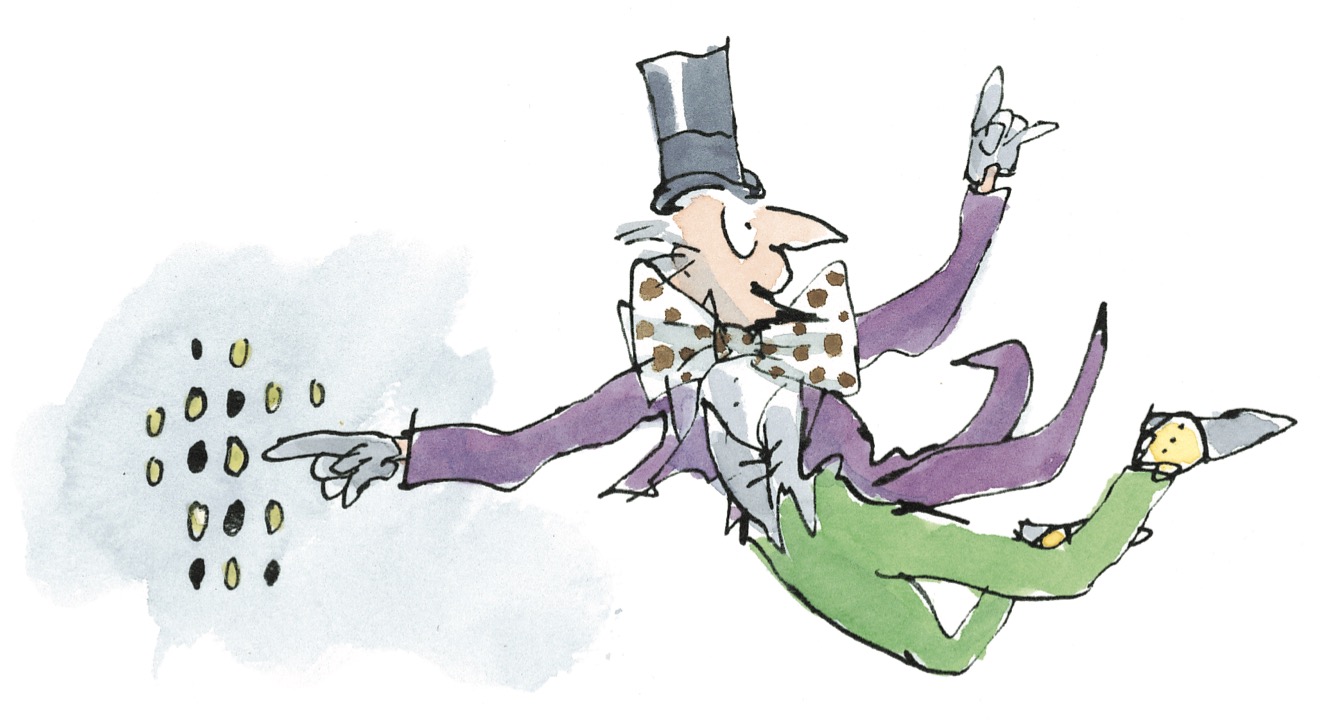
Published editions may differ slightly from mockups and prototype designs.
Illustrations © 1998 by Quentin Blake.

